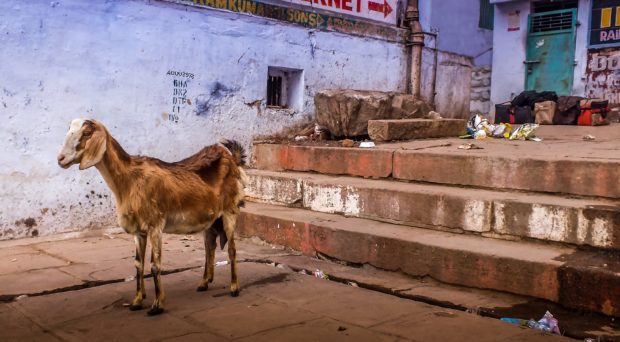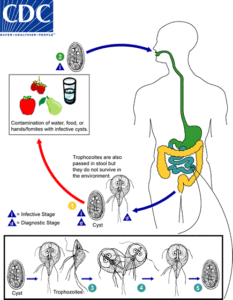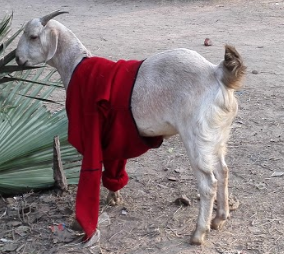
Goats have not previously been considered to harbour parasites that may infect humans with travellers’ diarrhoea. A study of backyard livestock living close to their human counterparts in an urban area of India has proved us wrong.

What we consider travellers’ diarrhoea, an unpleasant travel companion, has a great impact on human health in areas where these diseases are endemic. One of the pathogens causing the scour is a tiny parasite, Giardia duodenalis, which is excreted in an infected individuals` faeces and may then hitch a ride in your drinking water, causing a bloated belly and numerous visits to the toilet. You can take some Imodium and rest a couple of days, but if this parasite is widespread in your environment, re-infection is likely to occur. This is the case for a large bulk of the world’s population, as nearly 33% of the population in developing countries have had giardiosis.
Nearly 33% of the population in developing countries have had giardiosis
Goats are a suitable livestock for backyard rearing by people with limited resources, and they are a popular livestock choice in India, where they are often kept to supplement an already scarce income. In these settings, hygiene standards and sanitation facilities tend to be low, thus increasing the interface of humans and animals. This also raises the chance of zoonotic and anthroponotic infections to occur, that is, transmission of these pathogens from humans to animals and vice-versa.

The relevance of goats as a zoonotic source of human giardiosis is generally considered low; however, the majority of studies to determine this zoonotic potential have been conducted in Europe, North America, and Australasia. There are relatively few studies from less developed regions of the world, including India, which investigate the prevalence and zoonotic potential of Giardia shed by goats. This is in great contrast to the distribution of the world’s goat population, as 90% of them reside in developing areas of the world.
This study from Northern India – which took place in the outskirts of a city where people with lower incomes tend to settle – involved the collection of 207 fecal samples from goats and screening them for the presence of this parasite. The positive samples were further classified using molecular methods to determine which Giardia types they belonged to, which gives a pointer as to whether they are infectious to humans or not.
The results show the majority of these goats harbour Giardia types that may be infectious to humans, highlighting the importance of proper hygiene barriers, as well as changes to the notion that goats don`t harbour those Giardia types that may infect humans. It might be that the studies that reported a low prevalence of zoonotic types of this parasite may have looked in the wrong places – where goats and their owners do not live in close contact, such as under the same roof.
 Giardiosis is considered a neglected tropical disesase, and it seems to be a neglected zoonosis as well as in the case of goats and their owners in developing regions. This study may help to highlight the importance of proper husbandry, in terms of both human and animal health, and the importance of a One Health approach to ensure that both humans and goats may live together to improve each others well-being.
Giardiosis is considered a neglected tropical disesase, and it seems to be a neglected zoonosis as well as in the case of goats and their owners in developing regions. This study may help to highlight the importance of proper husbandry, in terms of both human and animal health, and the importance of a One Health approach to ensure that both humans and goats may live together to improve each others well-being.
Dr Kjersti Selstad Utaaker and Prof Lucy Robertson
Prof Lucy Robertson heads the parasitology lab at the Norwegian University of Life Sciences, and was lucky enough to be Kjersti’s PhD supervisor. The lab research continues to focus on transmission routes for zoonotic parasites.
Latest posts by Dr Kjersti Selstad Utaaker and Prof Lucy Robertson (see all)
- Goats in the City - 23rd March 2018
Comments